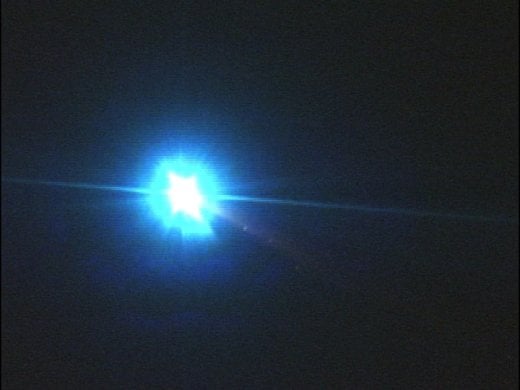A spectacular video recorded on September 29 shows the Jules Verne Automated Transfer Vehicle (A T V)plunging through Earth's atmosphere and breaking apart. It doesn't take long for the action to start -- about 7 seconds into the video, there's a bright flash -- which portrays the demise of the first and very successful space station freighter ship built by the European Space Agency. Two observation teams were chasing Jules Verne, in two separate aircraft, taking video and images. This video shows the spacecraft breaking up over the Pacific Ocean beginning at about 15:36 CEST. Below are more images, too:
Jules Verne launched on March 9, 2008 on an Ariane 5 rocket from Europe's Spaceport in French Guiana. The ATV delivered 6 tonnes of cargo to the International Space Station, and remained docked to the ISS for five months. During docked operations, it also performed a maneuver to help the ISS avoid a piece of space debris. For more info on Jules Verne see some of our past articles
here (yesterday's article about the deorbit)
, or here, describing
about how great it was
, and
here, when it pulled into port at the ISS.
Here's a few images of the breakup, and farther below is an image of the interior of Jules Verne as it was docked to the ISS, and finally, an image of the ATV as it undocked from the station on Sept. 5. Au revoir Jules Verne! [/caption]
[caption id="attachment_18815" align="alignnone" width="520" caption="A shower of debris results as the ATV continues its plunge through the atmosphere. Credit: ESA"]
[/caption]
[caption id="attachment_18816" align="alignnone" width="400" caption="Expedition 16 and 17 crewmembers inside Jules Verne ATV. Jules Verne is Europe's first Automated Transfer Vehicle. Jules Verne docked with the International Space Station on 3 April 2008. Credit: NASA"]
[/caption]
[caption id="attachment_18817" align="alignnone" width="400" caption="ATV after it undocked from the ISS on Sept. 5. Credit: NASA"]
[/caption]
Source:
ESA
 Universe Today
Universe Today
